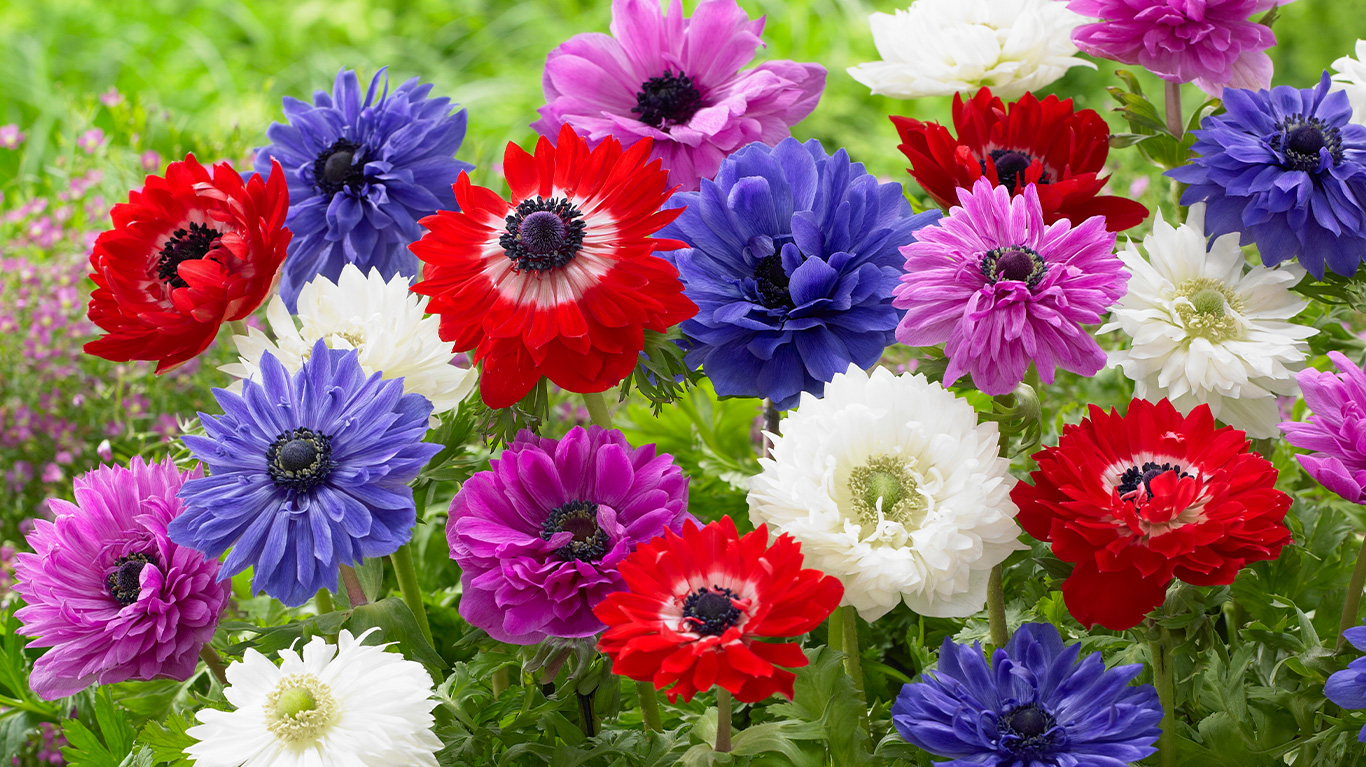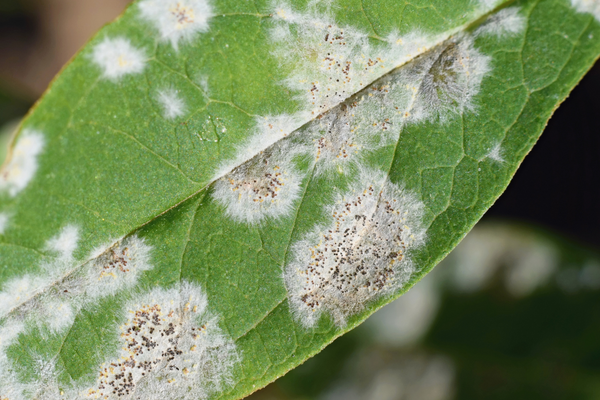
How Supplied
Our bulbs will be delivered fresh and healthy. There should be firm, not soft. Some bulbs may arrive with slight mould patches, but this is completely normal and can be brushed off. If you suspect that your bulbs are faulty, do not hesitate to get in touch.
Once your bulbs arrive, take them out of their packaging (including bags) and lay them out on newspaper so they can breathe. This is so they don’t excessively sweat in their containers, ruining the bulbs. Leave somewhere cool and dry until it’s time to plant them.
What We've Included
When to Plant | Where to Plant | How to Plant | After Care |
Common Issues | When will they flower | Inspiration | Further Reading
When to Plant
With a large variety of Anemones to choose from, there’s something for everyone. But with a large catalogue of Anemones, it can quickly get a bit confusing on when to plant what.
For Spring-flowering varieties like Anemone Blanda and Nemerosa, it’s best to plant them in autumn (September/October), just before winter.
If you’re looking to grow herbaceous perennial favourites like Anemone Hupehensis or the Japanese Anemone (Anemone Japonica), then these are supplied either as bare rooted or potted plants from September through to early May (potted can be supplied into early summer).
If you’re after a fuss-free anemone, Anemone Coronaria is a perfect option. This group includes St Bridgid and De Caen varieties. You could plant them in any month of the year if you wanted, and they’d be there waiting for you some months later. For example, if you wanted to see them appear in summer, plant them in spring. For autumn, plant them in early summer, and for spring plant them in autumn.
Where to Plant
Position your Anemones in well-drained soil and somewhere that reaches plenty of sun. Anemone Coronaria, Blanda and Nemorosa are perfect for growing at the front of the border as ground cover or as a companion plant in a container. If their soil isn’t too soggy, these blooms (regardless of their season) will thrive.
Anemone coronaria can be planted in light shade or full sun, as they prefer sunny conditions. Blanda and Nemerosa don’t mind the shade as much, as that’s what they get in a woodland area.

How to Plant
To see the best results from your Anemones, follow these easy-to-follow planting instructions.
Anemone Bulbs/Corms
1. Dormant bulbs and corms will need rehydrating before planting, especially if you’re a bit late getting them in the ground. Soak them in water for 12-24 hours before planting. This will help speed up the establishment of the roots.
2. Dig a hole that’s wide enough to fit the bulb comfortably, and at least 2-3 times the bulb’s depth (around 15cm deep). Planting at this depth can encourage the bulbs to reflower more reliably the following year.
3. A site with less well drained soil with benefit with adding bonemeal and horticultural grit (or spent compost) to the bottom of the hole. This will help the bulbs to grow healthily and create that all-important well-drained soil.
4. Pop each bulb into its hole, pointed side up. Space each bulb twice its width apart (5-7cm).
5. Cover with soil and pat down.
Anemone Plants supplied in Pots or modules
- Dig a hole in the desired area of the garden that’s big enough for the module.
- Ease them gently out of their pot/tray and plant them into place.
Rhizomes
- Soak them in water for about 2-3 hours before planting.
- Plant these anemones flat about 2cm deep and 8cm apart.
- Cover with soil and water generously.
Anemones in Containers
1. Fill your pot ¾ of the way with any multi-purpose compost.
2. Place your bulb/corm on top of the soil on a bed of Alpine or horticultural grit.
3. Cover with compost to the top of the pot.
4. Gently press the soil so that it’s nice and flat.
5. You can place your pot on feet to allow the moisture from the pot to escape.
After Care
When to water
If the soil is moist, there’s no need to water these flowers too often. As the spring season in Britain is usually quite damp, the rain will water them for you!
If we’re having an abnormally dry season, especially during the summer, then you can water them once the soil feels dry but be careful not to waterlog the soil as these plants can get damaged easily by excessive watering.
What to do once they’ve finished blooming
Leave the foliage to fully die back before cutting. This will allow the plant to soak up enough energy for the following year, helping it to grow into a healthy new plant.
However, you can cut the main flower stalk down to the base once they’ve finished flowering if you prefer to keep a tidy display, as long as the foliage leaves are left intact.
Storing Tips
Varieties like Blanda and Nemerosa are designed to survive the winter weather, but sensitive varieties like Coronaria need a bit of mulching to keep them warm. However, you could also lift them over winter, ready to plant them back out after frost has disappeared.
1. Wait until the plant has died down and has reached a straw colour (often yellow).
2. Dig up the area they’re planted gently. Try not to damage the plant in the process.
3. Brush off any remnants of soil and dirt gently and divide them.
4. Leave to dry on a tray for 24 hours before storing so they don’t grow mould and rot. Store in a cool dry room until ready to replant in September.
Deadheading
Deadheading can help redirect the plant's energy into creating a new flower once the other one has wilted. It also helps to keep the flower bed looking tidy and uniform whilst the others are still in bloom. Simply cut the spent flower with clean shears, just above the leaves.
However, if you’d like to leave them to their own devices, then you can! Anemones are classic woodland blooms and love to be undisturbed.
Common Issues and How to Solve Them
Powdery Mildew
Although Anemones aren’t victims of many pests or diseases; you may find that their leaves suddenly have a white powder. This can be treated easily with a homemade solution of equal parts milk and water. Spray this concoction over the leaves and it should treat your mildew issue.

When will they Flower?
With so many varieties of Anemone, each one is subject to varying flower times. Here’s what you need to know.
Spring flowering varieties:
Anemone Blanda and Nemerosa are commonly found to flower in Spring. These blooms make for a superb show as ground cover or through the mid border. We recommend planting them along with early spring bedding such as Polyanthus and pansies.
Summer & Autumn varieties:
Anemone Hupehensis (Chinese Anemone) and Anemone Japonica (Japanese Anemone) can be expected to bloom through Summer and into Autumn.
For year-round interest:
Anemone Coronaria is the dark horse of the Anemone world. They’ll flower consecutively after planting, regardless of the time of year. For example, you could plant them in September/October to see them in Spring, or you could plant them in April for a Summer show.
Ready to Shop?
Find some inspiration for your garden
Want to Know even more about Anemones?
Take a look at our helpful blog

